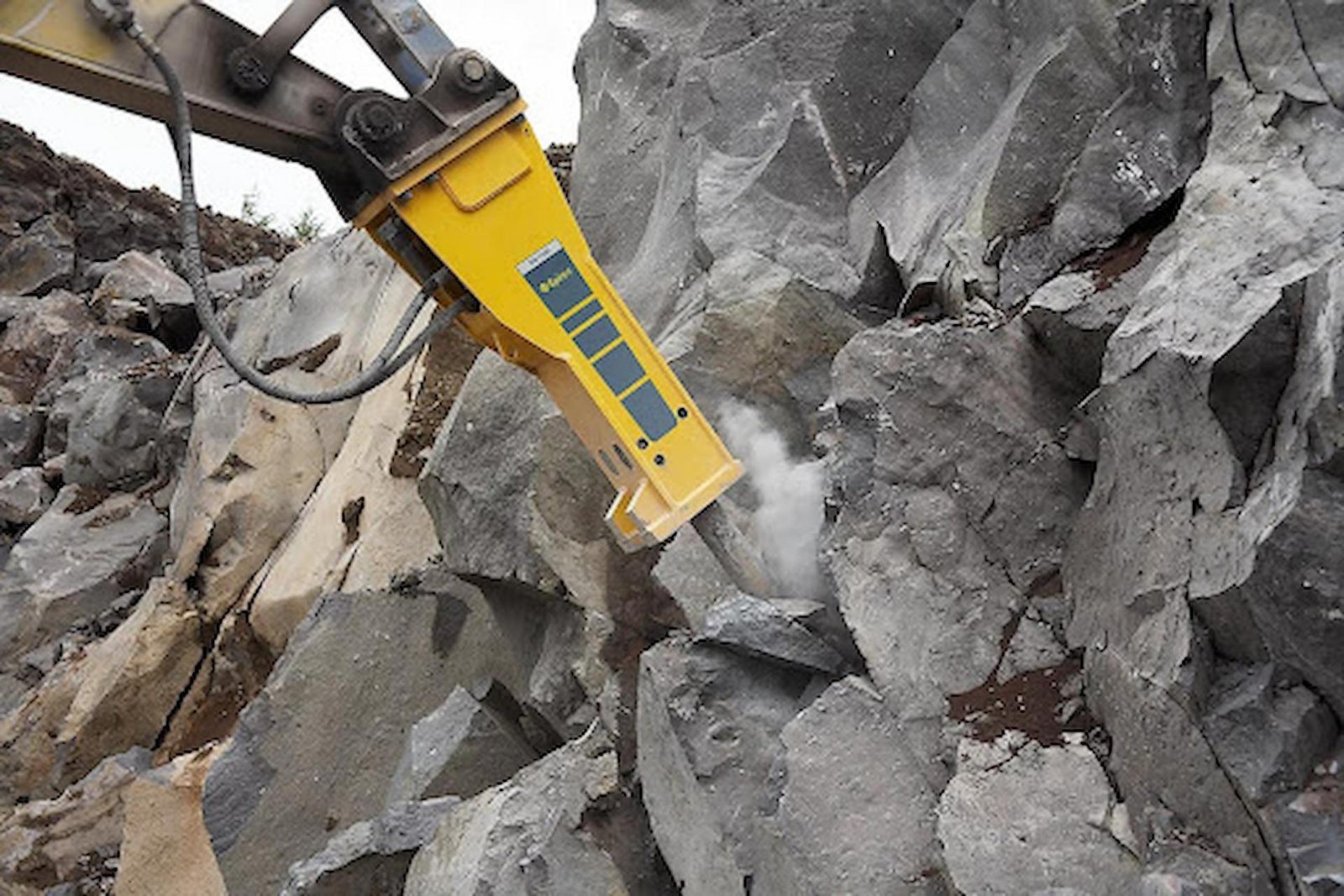Tired of the slow, noisy, and inefficient methods of breaking rock and concrete? Discover how modern hydraulic excavator breakers are revolutionising heavy-duty projects. From enhanced power and precision to reduced noise and vibration, the latest innovations in these powerful tools are making demolition, mining, and quarrying operations faster, safer, and more productive than ever before.
In the demanding world of heavy-duty construction, mining, and demolition, a piece of equipment’s effectiveness is measured by its raw power and reliability. For decades, the hydraulic breaker has been the go-to attachment for tackling the toughest materials, from reinforced concrete to solid rock. But the breakers of today are a far cry from their predecessors. Modern Hydraulic Excavator Breakers have evolved into highly sophisticated tools, designed for maximum efficiency, precision, and operator comfort. The innovation isn’t just about hitting harder; it’s about hitting smarter.
Today’s advancements are focused on a variety of key areas, all of which contribute to a more productive and profitable job site. These innovations range from innovative technologies that optimize performance to design improvements that enhance durability and reduce environmental impact.
More innovative, More Efficient Technology
The most significant leap in hydraulic breaker technology has been the integration of intelligent systems. These aren’t just brute-force machines anymore; they have a brain that adapts to the task at hand.
- Auto-Control Systems: Many modern breakers feature an automatic control system that adjusts the impact energy and frequency based on the material’s hardness. When the tool encounters a soft material, it delivers a high-frequency, low-energy strike. When it hits something challenging, it switches to a powerful, low-frequency blow. This not only speeds up the job but also reduces wear and tear on both the breaker and the excavator.
- Energy Recovery Systems: This clever innovation reuses the recoil energy of the piston to increase the next blow’s power. Instead of wasting that energy as heat or vibration, it’s harnessed to deliver a stronger strike, which means less fuel consumption and a more productive machine.
- On-Demand Power: Older breakers often ran at a constant power setting, which was inefficient. The latest models can be set to “start and stop” modes, where the breaker only fires when it’s in contact with the material. This feature saves energy, reduces blank firing (when the breaker strikes nothing), and minimises noise.
Enhancing Durability and Reducing Maintenance
Heavy-duty work takes a toll on equipment. Innovations in materials and design are extending the lifespan of hydraulic excavator breakers and reducing costly downtime.
- Wear-Resistant Materials: Tools and bushings are now made from advanced alloys that can withstand extreme impact and abrasive conditions for much longer. This means fewer tool changes and less time spent on maintenance.
- Monoblock Housings: Many of the newest breakers feature a single-piece, or “monoblock,” housing. This design eliminates the need for tie-rods, which were a common point of failure in older models. A simpler, more robust structure means greater reliability and lower maintenance costs.
- Automatic Lubrication Systems: Greasing a breaker is a crucial but often forgotten maintenance task. Integrated auto-lube systems ensure the tool is lubricated correctly at all times, preventing premature wear and extending its life.
Addressing Environmental and Operator Concerns
The construction industry is increasingly focused on sustainability and safety. Modern Hydraulic Excavator Breakers are designed with these factors in mind.
Noise and Vibration Reduction
Working in a residential or urban area requires careful management of noise pollution. Breakers are now equipped with features that significantly reduce operational noise and vibration.
- Silenced Housing: Many models are fully enclosed in a sound-dampening housing, which drastically cuts down on noise levels. This is critical for urban projects where noise ordinances are strict.
- Anti-Vibration Systems: Innovative mounts and cushioning materials absorb the shock and vibration before it reaches the excavator and, most importantly, the operator. This not only improves operator comfort but also reduces the long-term health risks associated with constant vibration exposure.
Safety and Precision
Modern breakers offer more control and precision, making the job site safer.
- Advanced Mounting Systems: Quick-attach systems allow for fast, secure switching between different attachments, minimising the risk of accidents during equipment changes.
- Variable Speed and Force: Operators can fine-tune the breaker’s power to match the specific task, whether it’s delicate demolition work near utilities or crushing a large boulder. This level of control prevents damage to surrounding structures and improves efficiency.
Looking Ahead: The Future of Breaker Technology
The future of hydraulic breaker technology is poised for exciting advancements centred on automation, data analysis, and alternative power sources. We can anticipate the emergence of “connected breakers” that transmit real-time data on their performance, usage, and maintenance needs to a central system. This will enable predictive maintenance, ensuring that equipment never fails unexpectedly and minimising costly downtime. Additionally, as the industry continues to embrace a greener future, hydraulic breakers will likely be paired with hybrid or electric excavators, which will significantly reduce fuel consumption and lower emissions. These innovations will not only boost efficiency and reliability but also contribute to a more sustainable construction and demolition sector.
In Summary
Ultimately, the innovations in Hydraulic Excavator Breakers are transforming the industry, making heavy-duty projects more productive, safer, and environmentally friendly. These tools are no longer just for breaking; they’re for building a better future.




